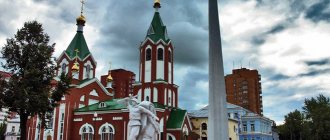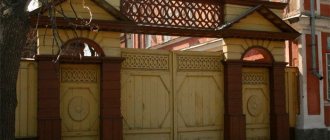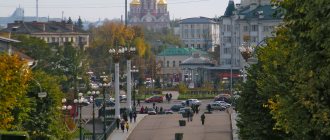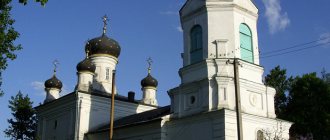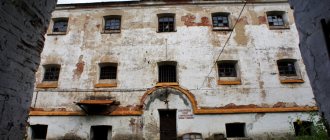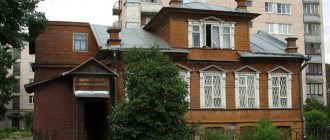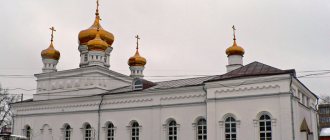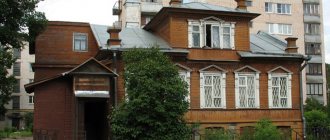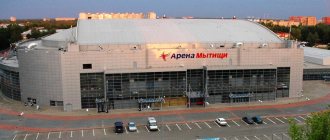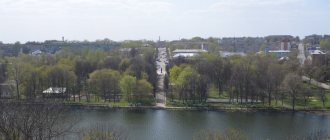Category: Sights
Founded in 1679 in the west of the Ishim Plain, today the city of Kurgan is an important business, economic, commercial, industrial and cultural center of the Urals, as well as the administrative center of the Kurgan region.
The city received its name in honor of the giant mound, also called Tsarev, which was located on its territory. However, in the 60s of the last century, the mound was demolished by order of local authorities, so now only the name remains of this mound. Fortunately, other interesting Kurgan sights have been preserved. The most interesting of them are related to the Decembrists and their stay in these places. There are many museums in this Ural city. Some of them are the only ones in the Urals and even in the country.
House-Museum of A. I. Kocheshev
Photography lovers will find it useful to visit one very unusual attraction of the city of Kurgan - the house-museum of the famous Kurgan businessman-photographer A.I. Kocheshev. It is located in the building of a former photographic studio, where the photographer himself once worked. Thanks to his talented works, tourists today can see what Kurgan looked like at the turn of the 19th and 20th centuries.
A huge number of officials and their families, military men, artel workers and peasants passed through Kocheshev’s photo studio. With the advent of Soviet power, the photographer, having lost his photo salon, moved with his family to Omsk, and his photographs are now stored in Kurgan museums and private albums of townspeople.
Location: Sovetskaya street - 92.
Historical data
From history textbooks we know that, starting in the 17th century, Russia expanded into the resource-rich lands located beyond the Ural ridge. At first, these were small Cossack detachments that pushed the Khan’s army into the depths of Siberia. And today thousands of tourists want to get to Kurgan. The sights of the city will not leave anyone indifferent.
Colonization did not bypass the territory of the current Kurgan region, which was once inhabited by Bashkirs, Kalmyks, and Kazakhs. The first Russian settlement was built near the Tsarev Kurgan, near which the Tobol River flows. The location for the Tsar's settlement was chosen for a reason; it was a strategically important point. From time to time, the settlement was destroyed as a result of raids by local Kazakhs. However, the village was restored each time by its inhabitants.
Tsarev Kurgan was a truly enormous bulk structure. In the 60s of the 20th century, local authorities considered its further existence unnecessary. Thus, the historical name remained from the giant mound. At the same time, it was decided to preserve other attractions for posterity.
Almost 100 years after its founding, in 1782, the settlement acquired the status of a city, which consisted of the Old and New Towns. The first of them was inside the second. The old city is represented by the Kremlin, the gates of which are quite reliable, since they were double. In the New Town, in addition to residential buildings, there were warehouses with military equipment, military barracks, and a gunpowder cellar. The outside was protected by 8 very powerful bastions, behind which an additional wide ditch was dug around the city.
Governor-General Kashkin’s great merit in the radical reconstruction of Kurgan. According to the master plan they developed, at the end of the 18th century it was planned to divide the city into quarters, and those consisted of streets. The Tobol River, or more precisely the direction of its flow, served as a landmark for the buildings. Rich townspeople could afford to build houses made of stone; the rest of the population settled in wooden buildings. The industry of that time was represented by three forges, one soap factory and two tanneries. One parish is organized for church services.
It took another hundred years for the city to become a trading center where one could buy bread, butter, lard and meat. Industry mainly existed at the expense of raw materials supplied by agricultural producers. This is how the city of Kurgan developed. The sights of the settlement should be seen by everyone who finds themselves in this area.
The Trans-Siberian Railway project served as a significant impetus for the development of the city, and its new life began. This period was marked in the history of the city by the construction of more than sixty factories and factories, and a new direction in gardening appeared - growing tobacco. Kurgan developed at a rapid pace. The sights of the city will be of interest to everyone who loves museums and monuments.
At the beginning of the 20th century, the first plant in Russia producing water turbines was launched. Literally from the first days of the Great Patriotic War, according to the historical order of the country's leadership, enterprises were transported from the western regions to Kurgan, as well as to many other cities of the Trans-Urals, and quickly put into operation. This circumstance contributed to the emergence of Kurgan as a huge industrial center with developed medical and educational institutions.
House-Museum of V. K. Kuchelbecker
In Kurgan, tourists can find a one-of-a-kind museum (there is nowhere else like it in the Russian Federation), dedicated to the life and work of the Russian Decembrist poet, a lyceum friend of the no less famous Russian writer A.S. Pushkin - V.K. Kuchelbecker.
After graduating from the Tsarskoye Selo Lyceum, Kuchelbecker was enrolled in the College of Foreign Affairs. For some time he worked as a teacher of Russian and Latin at the Main Pedagogical University, where his students were the future composer M. Glinka and the younger brother of A. S. Pushkin.
In 1817, he became a member of the secret society (pre-Decembrist organization) “Sacred Artel”. V. K. Kuchelbecker was a direct participant in the events on Senate Square; he participated in the assassination attempt on the brother of Nicholas I, Grand Duke Mikhail Pavlovich. After the discovery of the Decembrist uprising, he tried to flee abroad, but in Warsaw he was identified and returned back.
Kuchelbecker lived in the current museum from 1845 to 1846, together with his wife and two children. Today, tourists can see exhibitions with the poet’s personal belongings, his works and household items that he used.
Location: Kuibysheva street - 19.
Kurgan Aviation Museum
The opening of the Kurgan Aviation Museum took place in 1985. It has the status of a departmental museum of Kurgan Airport. Today this museum is the only one of its kind in the Urals and Siberia.
The museum's exposition is represented by 14 aircraft, which in turn are located on the paved territory of the Kurgan airport. Tourists, while visiting this museum, can see not only military aircraft, but also transport and passenger models.
Location: Gagarin street - 41B.
Kurgan Regional Art Museum
Kurgan Regional Art Museum named after. G.A...
Mound
Kurgan Art Museum was founded in 1982. Paintings by Russian painters of the 20th and early 21st centuries are stored here: Yulia Razumovskaya and Grigory Shegal, Leonard Turzhansky and Pyotr Konchalovsky, Nikolai Dormidontov, Alexander Deineka. The museum displays the largest collection of watercolors in Russia - more than 1,500 sheets by Arthur Fonvizin, Lev Bruni, Vasily Zvontsov and other artists.
In the arts and crafts section, visitors can see works of traditional crafts of Russia and artistic crafts of the Trans-Ural region - weaving, embroidery, ceramic and glass products, cast iron objects made using the Kasli casting technique. Also here are exhibits of Russian culture of the 18th - early 20th centuries: icons, early printed and handwritten books, engravings.
Visitors are invited to take a walk along the tourist routes: “Art Museum and City Museums” and “Art Museum and Historical Part of the City”. In addition, the museum often organizes traveling exhibitions. One of them, “Kurgan Artists,” talks about the visual traditions of the Trans-Urals.
Kurgan Drama Theater
The State Drama Theater in Kurgan appeared in 1943; it was founded on the basis of a troupe that was part of the Shadrinsky City Theater.
Famous actors played in the performances of this theater: Yu. Yakovlev, V. Vasilyeva, V. Solomin, A. Myagkov and many others. Today, the Kurgan Drama Theater is a living creative mechanism that is constantly looking for new and interesting theatrical forms in the field of modern drama.
Location: Gogol street - 58.
Puppet theater "Gulliver"
The creation of the Kurgan Puppet Theater was conceived during the Great Patriotic War, at the end of the summer of 1943. However, the theater troupe did not have a building for a long time; the performances were on-site. In 1948, puppeteers were sheltered by the regional philharmonic society.
And the year 1949 was marked in the life of the theater troupe with the premiere of the play “The Scarlet Flower,” which took place on the puppet theater’s own stage. Over the entire period of creative activity, the troupe has been recognized as one of the best not only in Russia, but also in France.
The Gulliver Puppet Theater deserves to be called a landmark of Kurgan, for the reason that it is one of the first cultural institutions of this kind. Everyone who finds themselves in Siberia should look at Kurgan. The sights of the city will appeal to anyone who loves old buildings and interesting monuments.
Decembrists Museum
A museum dedicated to the Decembrists was opened in Kurgan in 1975, in the house where M. M. Naryshkin, colonel of the Tarutino Infantry Regiment, once lived with his wife. This military man was directly involved in the preparation of the uprising in 1825.
The Naryshkin family lived in a rich house. Today, tourists can see about 2,000 exhibits that can “tell” about the Decembrist movement and the life of the Decembrists who lived in exile in Kurgan.
Location: Klimova street - 80A.
Monument to Pavel Vereshchagin
Tourists can see the monument to the hero of the cult Soviet film White Sun of the Desert, Pavel Vereshchagin, near the Kurgan customs building. The monument to the movie screen customs officer was erected in 2007. The authors of the creation of this attraction were Kurgan customs officers, and they also collected funds for its creation. The song performed by Vereshchagin in the film is the unofficial anthem of the entire Russian customs.
Location: Burova-Petrova street - 132.
Monument zero kilometer in Kurgan
Another modern Kurgan monument, included in the list of new city attractions, is the zero kilometer. And although this is not the first such monument erected in Russia and in the world, in Kurgan they approached its design creatively, depicting a postman at the zero kilometer. The monument was erected on the day of the city’s 333rd anniversary, near the main post office, naturally, at the zero kilometer of roads.
Fire Tower
While in the city of Kurgan, tourists simply cannot pass by the fire tower, one of the main city symbols. It was built of wood in 1882 under the patronage of the city government.
Now the tower is usually called an architectural monument and at the same time a symbol of the fire department of the entire Kurgan region. Tourists at the top of the fire tower can see the chief fireman, or rather his dummy. There is a Gosha dummy installed there, on which firefighters practiced the skills of performing chest compressions and artificial respiration for quite a long time.
Location: Kuibysheva street - 62.
Alexander Nevsky Cathedral
This Orthodox religious center is the main temple of Kurgan. The decision to build it was made in 1895 by Archbishop Agafangel of Tobolsk. He was the first person to contribute the first funds in the amount of 100 rubles for the construction of the cathedral. The main sponsor of the construction was the merchant D.I. Smolin, who donated 30,000 rubles.
Location: Volodarsky street - 42.
Alexander Nevsky Cathedral
The decision to build the temple was made in the winter of 1895. The bulk of the funds were donated by honorary citizen merchant D.I. Smolin. Other merchants and parishioners also contributed. As a result, with the money collected from the people, the temple of Prince Alexander Nevsky was built and consecrated on June 22, 1902.
In fact, it functioned until 1929. Then, over the years, a museum was organized here, converted into a gym, the Faculty of Mechanization of the Higher Party School, a clothing warehouse, and a planetarium. Only during the period of perestroika it was decided to use it for its intended purpose - the religious building was returned to the Orthodox community. Since the summer of 1989, the building began to be restored and revived. In 1993, the Alexander Nevsky Temple became a cathedral.
Cathedral Mosque
Muslim tourists can visit the cathedral mosque located in the city of Kurgan. It was built in the 2000s. The mosque is located in the city center.
There was previously a mosque on the territory of Kurgan, opened by Amfrozan Galiev in 1910. During the Soviet period, this religious institution was abolished, and a Tatar-Bashkir school was opened in its building.
Location: Sibirskaya street - 2.
Mamayev Kurgan in Volgograd
There is another place in Russia called a mound. On the right bank of the Volga River in the Central district of the city of Volgograd is located Mamayev Kurgan. Sights of this magnitude are revered by all residents of our large country. It was here that fierce battles took place during the Battle of Stalingrad.
For this place, many people strive to visit Volgograd. Sights - Mamayev Kurgan, Motherland Calls - military in nature. On the territory there are graves of soldiers who fought for the country and were killed in these brutal battles.
